Before I get to the main business for this week, I want to remind readers that the Becket Lecture is less than a fortnight away on Tuesday 14 May. It will be given by Professor Elisabeth van Houts (University of Cambridge). This FREE public lecture will be in The Michael Berry Lecture Theatre, Old Sessions House, CCCU CT1 1PL at 6pm (drinks reception from 5.30pm). We are delighted to welcome Professor van Houts to Canterbury where she will be speaking on ‘Empress Matilda (d. 1167) and Archbishops in Twelfth-Century Germany, France and England’. All welcome.
Now to the Medieval Canterbury Weekend 2024 and I’ll start by thanking all our terrific speakers who gave up their time to come to Canterbury to give fascinating and thought-provoking talks on a wide range of topics – from Green Men to failed medieval merchants by way of real women in royal forests and the English as ‘barbarians’ as seen by Italian Renaissance scholars. Next, I would like to thank all those who chaired the various lectures, much appreciated that staff from across the Humanities at CCCU gave up their time and did such a sterling job. These were Drs Catriona Cooper, Maria Diemling, Katy Mortimer, Heidi Stoner, and would have included Drs David Budgen and Astrid Stilma if they had both been well enough. Additionally, Dr Dean Irwin provided cover by chairing several extra sessions (as well as giving his paper) and Kieron Hoyle, a doctoral student chaired a session. She had also guided the two groups on Saturday morning to Canterbury Cathedral Archives for Cressida Williams’ excellent tours of the medieval archive treasures. Lizzie Burton another doctoral student, who like Kieron had previously been a member of Education at CCCU, did a similar job at St Mildred’s church where Professor Paul Bennett guided two groups around the church to demonstrate the development of St Mildred’s from the early 11th to the early 16th centuries. Thanks, therefore, too to Tessa Taylor from St Mildred’s for opening the church for these visits. I was fortunate for the St John’s hospital tours that the Rev. Grahame Whittlesea had generously agreed to open the Norman necessarium, the chapel and the Tudor refectory, while my helpers were Marie and David Le Bon from CCCU Security, and Robyn Dye, as General Manager, had allowed us to visit this ancient gem.
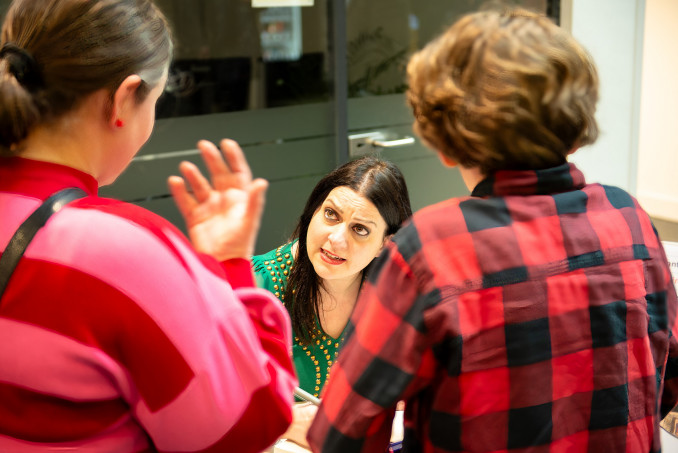
Many thanks, also, to Dr Diane Heath as co-organiser of these History Weekends, including her work on designing the souvenir brochure, and we are exceedingly grateful to our fantastic group of postgraduates and undergraduates who are the Welcome Team. Moreover, from among the doctoral students Peter Joyce ran the large hall throughout the Weekend as well as being our official photographer. He was aided by his wife Jane, also a postgraduate, and their son Jack, who looked after the roving mic for the Q&A sessions there. The small hall was managed by Michael Byrne. A fifth doctoral student, Jason Mazzocchi operated the temporary box office among other activities, and we were fortunate to have several undergraduates at various points throughout the Weekend: Greg, Rob, Dan, Freya and Harvey.
I should like to thank the CCCU Hospitality team who opened the Atrium café on both days, the high quality of the pies was noted by one attendee on their feedback form. Housekeeping had done a great job about setting out the chairs in both rooms and clearing away the tables from the previous event on the Friday. Thanks are similarly due to Toby Charlton-Taylor, who had gone through the AV equipment in both rooms with us which was very useful. Those on duty as members of the Security team in Augustine House kindly helped by ensuring the main doors were accessible for attendees to the various lecture, which were outside the library’s core hours. Before the Weekend, Kellie Hogben in the CCCU Box Office had set up all the events on Spektrix and Ben Cornwell had designed the MCW24 webpages on the CKHH website.
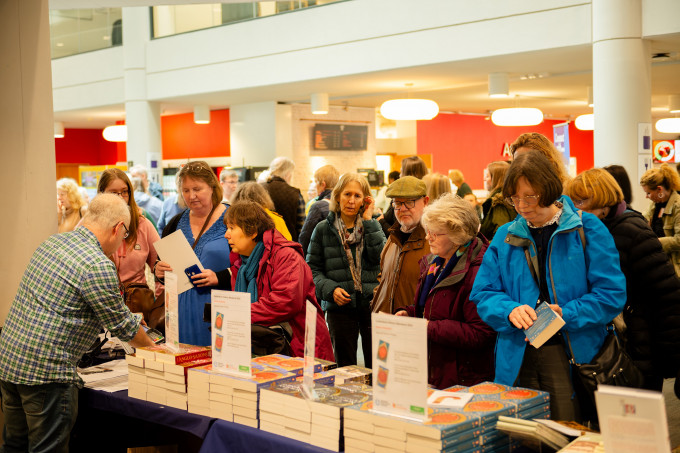
Furthermore, it was excellent to have the support of CCCU staff, especially Dr Claire Bartram, my fellow co-director of CKHH, and Craig Dadds running the CCCU Bookshop – many, many thanks Craig. As always it was great to welcome back people who had been before, but also lovely to meet new people who had discovered the Weekend for the first time. Interestingly, we are back as an international festival and even though there was nobody from Scotland or Ireland, there were people from south, mid and north Wales. Kent remains our core catchment area, but good to have people from many of the counties around London, as well as those from the capital itself. Moving beyond this ring, there were attendees from Sussex, Hampshire, Wiltshire and other southern counties through to Bristol, from Oxford and Cambridge and their environs, as well as the Midlands and the north: Northampton and Leicester, places in Cheshire and Lancashire, Shrewsbury, Hull and the furthest north – Darlington and Newcastle. Thus, without you there would be no Medieval Canterbury Weekend and it is fabulous that we sold about 1200 tickets, including a good number during the Weekend itself – so many thanks on behalf of the Ian Coulson Memorial Postgraduate Fund and the postgraduates it helps!
Over the Weekend our audiences heard 19 speakers who gave lectures at Augustine House. Consequently, it is not feasible to provide more than a brief summary for each but great to see from the feedback forms such comments as “All lectures attended were excellent”, “well organised, excellently executed” and “as a history teacher I come every year and it never disappoints! Everyone is so welcoming”. Others liked the “stimulating range of penetrating topics and speakers” as well as “sophisticated interpretations of complex and varied issues” and “the variety of subjects and speakers, the informal atmosphere, the audience of like-minded people – everything was very good”. The bookstall was well received too: “All the staff, and the volunteers, bookstall etc were so friendly”, “loved the bookstall, it was my favourite thing” and “excellent bookstall”. In terms of what people learnt about the Middle Ages, the three themes that kept coming up were: far more about the lives of women; how material culture can give great insights about this period, and thirdly that it is good to challenge preconceptions and received ideas by going back to the primary evidence.
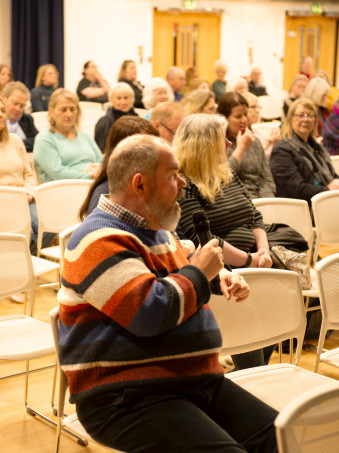
So to give a brief flavour we began on the Friday evening with Professor Louise Wilkinson, who having showed us how ‘Maid Marion’ had developed from an early modern fabrication and various 20th century film and television adaptations, it was now time to go back to the medieval evidence to find out how real women had been involved in the governing of royal forests. Furthermore, as she demonstrated, some of these women came from a long line of foresters, where they oversaw the local courts linked to forest law. For others life was more difficult as they had to fight to regain their rights to hold office, and not all royal forests were profitable making life exceedingly difficult to recoup sufficient revenue. At times, therefore, such women were prepared to find other ways to make the forest profitable, including assarting (clearing the woodland) without royal permission, an offence for which there are examples across the social spectrum. Equally it was not only noblewomen who contravened the hunting laws because there are cases of female poachers from within the peasantry, albeit more often as the receivers of venison rather than as killers of the king’s deer.
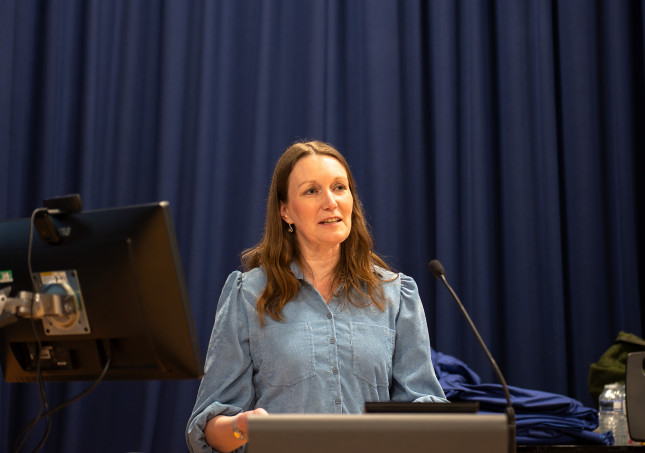
This was a fascinating lecture that got the Weekend off to a fine start and on Saturday morning we moved on to a diverse range of topics from the ways Jews and Christians lived next door to each other in the heart of 13th-century Canterbury by Dr Dean Irwin to how and why certain castles may have been constructed in specific localities by Alison Norton. The sense of debunking received ideas was very much at the centre of Imogen Corrigan’s very popular lecture on the Green Man, while one attendee noted that s/he had fallen “in love with Anglo-Saxon poetry after Dr Mike Bintley’s talk [and] would like to know more”.
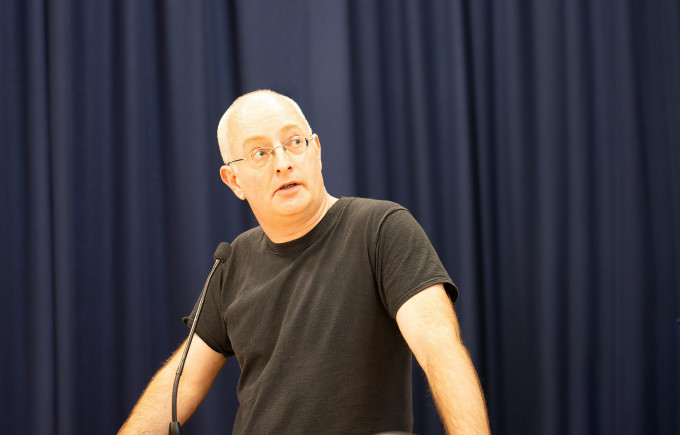
After lunch there was the choice of Dr Marc Morris discussing myths and reality of Anglo-Saxon society, which attracted a large and appreciative audience, or Dr Anthony Gross’ thoughtful consideration of the resurgence of the production of beautiful painted enamels from Limoges in the late 15th century and their contemporary value as devotional works. Material culture was similarly to the fore in Dr Chris Briggs’ exploration of what the confiscated goods of those convicted in the revolts following Jack Cade’s main rebellion can tell us about standards of living and regional differences as well as similarities concerning the households of farmers, artisans and craftsmen. Among the household items Chris focused on were pots (their value varied considerably), coverlets and gowns, the rebels from Kent generally having goods at the upper end of the scale in terms of value. Goods, too, featured in Dr Justin Colson’s presentation on London merchants using Richard Arnold as his central case study, thereby highlighting how network analysis can reveal much about the lives of such men.
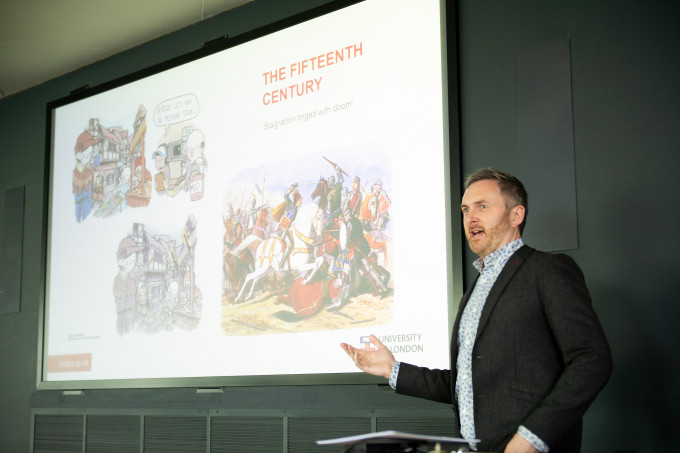
Moving on again, the choice was between Dr Janina Ramirez on the importance of women in the Middle Ages and Dr Chris King on exploring sensory experiences in the medieval urban household. Both were well received by their respective audiences, and after her lecture there was a long queue of eager people wanting Jamina to sign their newly purchased copy of her latest book: Femina. However, we did get everyone through and this brought us to the final session of the day, Professor Mark Bailey’s consideration of the recent revival of the idea of a ‘golden age’ for women after the Black Death by some scholars and the implications of this on (northern) European marriage patterns below the elite, and Dr Susan Edgington’s examination of the three wives of Baldwin I, thereby taking her audience to the lives of those involved in the Crusades.
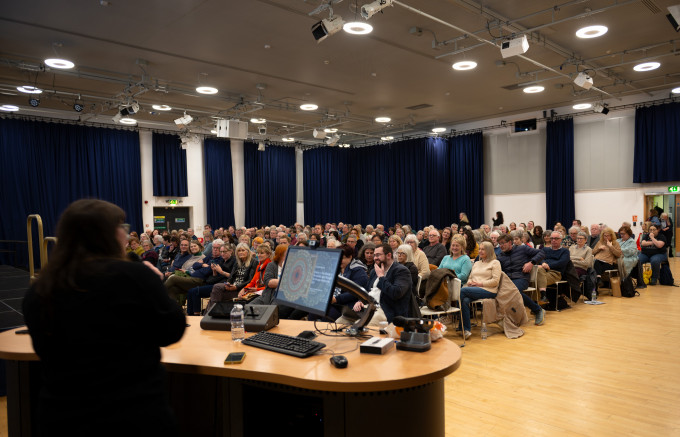
After such a full day, the buzz around Augustine House was palpable and it was still there among those who came on Sunday where we started with Professor Chris Woolgar’s assessment of the sorts of goods English people had in the later Middle Ages. As an alternative, people were able to see Dr Alexandra Lee’s presentation on the plague and religious processions in late medieval Italy, a topic that several audience members commented was totally new to them and which they had found to be exceedingly interesting.
For the penultimate session the choice was between Dr Claire Martin’s investigation of the ‘making’ of the Boleyn family and Dr David Rundle’s assessment of what the Italian Renaissance owed to England. Again, both were well received, one attendee commenting that s/he hadn’t known “that the Boleyn family had such a fascinating back story”, while David’s detailed exploration of how Italian scholars used notions of centre and margin to construct a comparison between civilization and barbarity was, as one attendee put in “truly illuminating”.
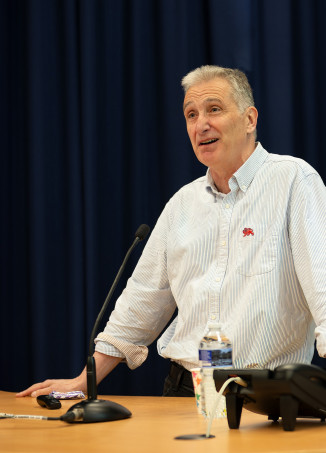
We ended the Medieval Canterbury Weekend with two very different presentations about London. Professor Caroline Barron considered a fascinating set of illustrations showing the city’s mayor and 24 aldermen in 1446-7, while Alfred Hawkins explored the Tower of London as a royal palace. As Caroline said, this is still a work in progress and she was keen to hear the audience’s views, including on why Thomas Chalton, a mercer and alderman of Bishopsgate ward, is depicted wearing a rather basic straw hat. This, and the matter of fur from Baltic squirrels featured in the discussion after her presentation, which was an excellent way to end the proceedings, especially as Alfred’s presentation was equally noted as “great”.
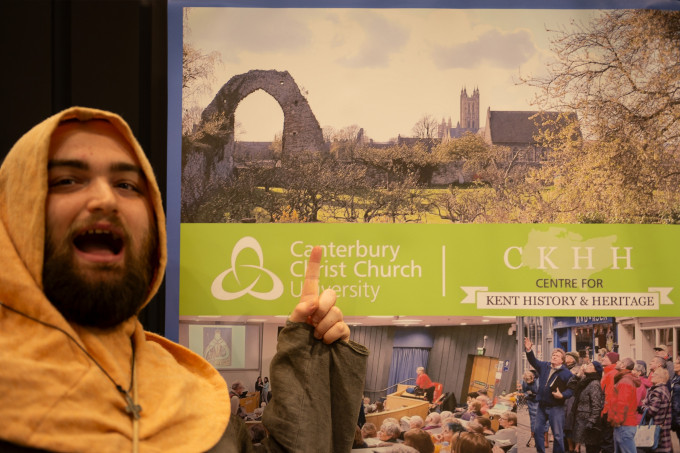
Next year we will be heading back to the ‘Tudors & Stuarts’ and once I know the dates, I’ll post them in the blog, when we’ll hope to see many of you again.
 Centre for Kent History and Heritage
Centre for Kent History and Heritage Sheila Sweetinburgh
Sheila Sweetinburgh 2874
2874


What a wonderful round up of a fantastic weekend of medieval history which we all so much enjoyed. Thank you Sheila for making this happen
Thanks Diane, glad you enjoyed it and that appeared to be the consensus from the comments and smiling faces.
Excellent job, Sheila, again! It was a lot of fun.
Thanks Imogen and there were lots of people who loved your ‘Green Man’ lecture!